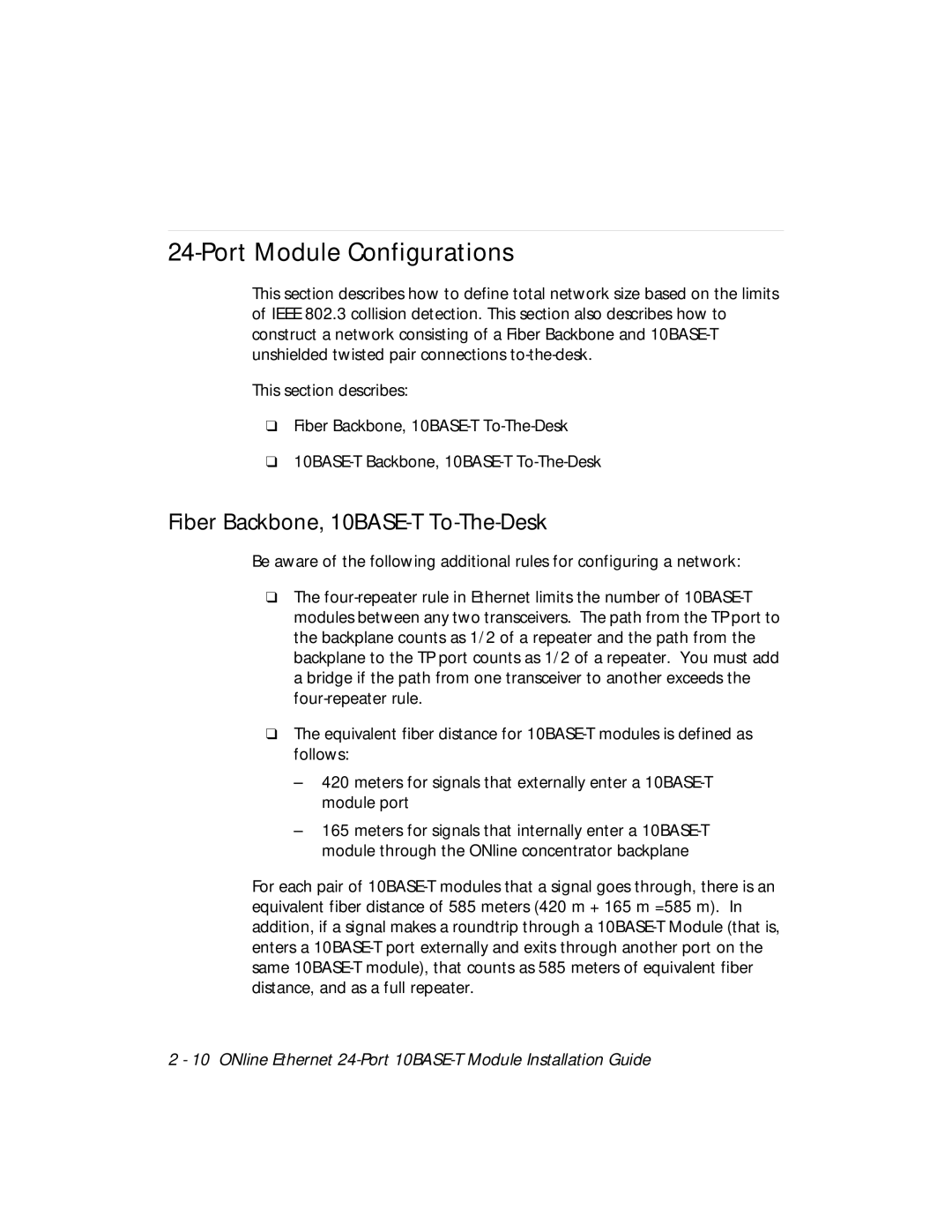
24-Port Module Configurations
This section describes how to define total network size based on the limits of IEEE 802.3 collision detection. This section also describes how to construct a network consisting of a Fiber Backbone and 10BASE-T unshielded twisted pair connections to-the-desk.
This section describes:
❑Fiber Backbone, 10BASE-T To-The-Desk
❑10BASE-T Backbone, 10BASE-T To-The-Desk
Fiber Backbone, 10BASE-T To-The-Desk
Be aware of the following additional rules for configuring a network:
❑The four-repeater rule in Ethernet limits the number of 10BASE-T modules between any two transceivers. The path from the TP port to the backplane counts as 1/2 of a repeater and the path from the backplane to the TP port counts as 1/2 of a repeater. You must add a bridge if the path from one transceiver to another exceeds the four-repeater rule.
❑The equivalent fiber distance for 10BASE-T modules is defined as follows:
–420 meters for signals that externally enter a 10BASE-T module port
–165 meters for signals that internally enter a 10BASE-T module through the ONline concentrator backplane
For each pair of 10BASE-T modules that a signal goes through, there is an equivalent fiber distance of 585 meters (420 m + 165 m =585 m). In addition, if a signal makes a roundtrip through a 10BASE-T Module (that is, enters a 10BASE-T port externally and exits through another port on the same 10BASE-T module), that counts as 585 meters of equivalent fiber distance, and as a full repeater.
2 - 10 ONline Ethernet 24-Port 10BASE-T Module Installation Guide
